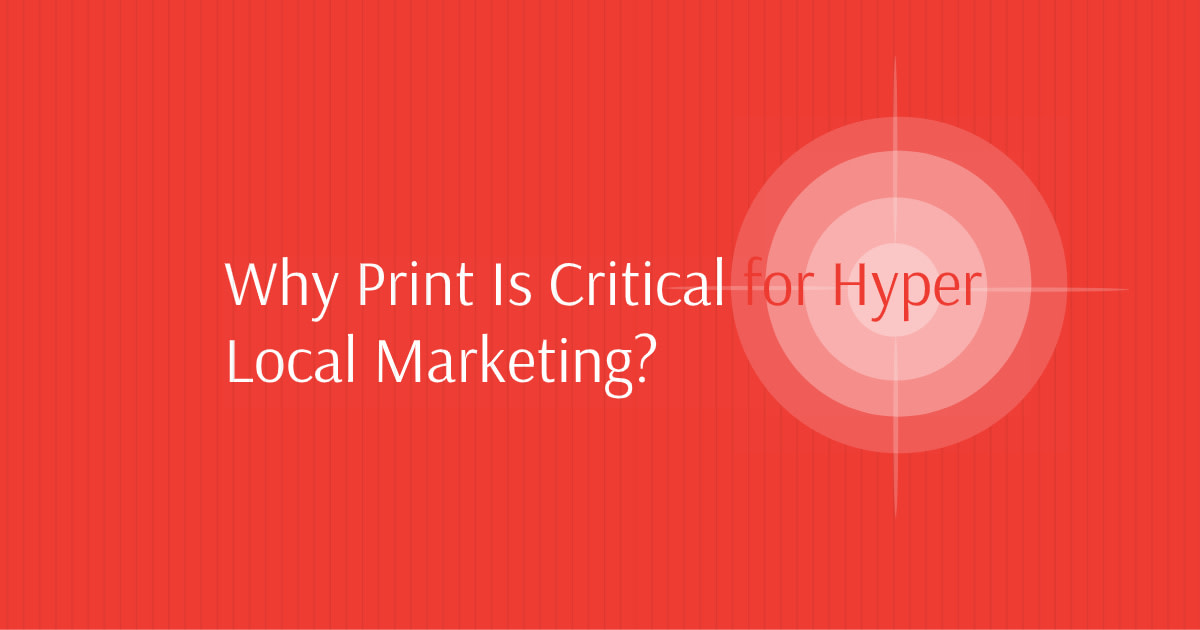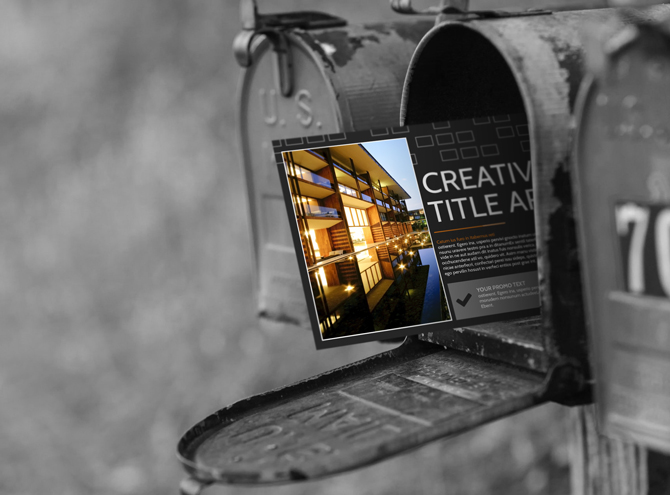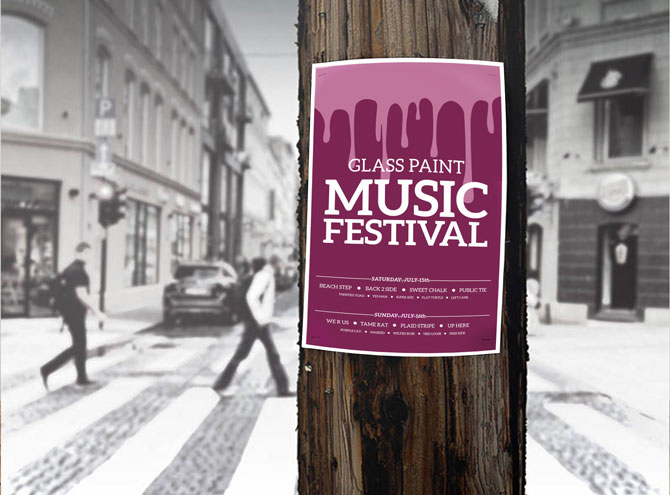Why Print Is Critical for Hyper Local Marketing


Hyper local marketing is an important strategy for regional small businesses that service a variety of neighborhoods or towns. The idea is simple: use tailored, hyper-relevant marketing materials in the various markets where you wish to sell more or drive brand awareness.
McDonalds does this on a global scale, using a think global, act local marketing strategy. Each of the company s franchises follow strict branding policies (I.E. the iconic golden arches and yellow and red color scheme). However, the food menu is tailored to the specific region this is why the United States has the Big Mac and the Middle East has the McFalafel.
You can use hyper local marketing in a similar way and the best medium for developing these campaigns is print. While the digital space commands most of the attention in our modern world, you can meet your audience where they are with print marketing.
For example, a customer will physically interact with a localized postcard. This makes it more effective than a hashtag on an Instagram post that quickly disappears in a sea of noise. In addition, Daniel Dejan, of Sappi North America, tells RR Donnelly: consumers can reach a point of monitor fatigue. What's more, neurologically, print marketing appeals to us as humans. He explains:

Neuroscientific research explains why people are still attracted to print as a medium. When we read ink on paper, we stimulate four senses (the smell, sound, feel, and sight of the paper). The more senses we stimulate, the more value we put in the content, and the more we retain the information.
To make the most of hyper local marketing, all print materials must have consistent branding (I.E. colors, logo, typography) and tailored messaging. The first step, however, is choosing the best print materials for your needs. Here are a few ideas to consider as you take the first step.
Connect with your community: Budget-Friendly Community Events to Reach Local Customers
Send Local Postcards
Postcard marketing, often referred to as direct mail marketing, allows you to reach local communities while increasing response rates. According to 2018 DMA Response Rate Report (DMA membership required to download), direct mail response rates are 9 percent for an existing customer list and 5 percent for a prospect list. Email, on the other hand, comes in at 1 percent for an existing customer list and 1 percent for a prospect list.
Beyond effectiveness, your customers look forward to getting mail. According to 2015 data, four in 10 Americans look forward to checking their mail. Use direct marketing to introduce new customers to your brand, influence sales, and motivate existing customers to buy again.
Get Hyperlocal: Make your postcards impactful by using familiar imagery. For example, this postcard includes an image of the brownstones Brooklyn locals know so well. When they identify with the imagery, they may be more likely to continue reading.

Start your design: Browse our selection of regular postcards and EDDM postcards
Hang Posters and Flyers Around Town
Posters and flyers are beneficial in spreading local brand awareness in public places. They can also drive direct transactions or online interactions when a QR code is included in the design. Experts at QR Code Generator explain how they work:
They [QR Codes] are designed to be scanned by camera phones, providing an instant link between the document or packaging being scanned and whatever online location the creator wants customers to visit. When we're talking about posters, this could be EventBrite pages for conferences, BandCamp band sites, or simply the home page of a small business.
Connect your QR code with a page designed specifically for local customers to maintain the connection you re developing. Before potential customers can scan the QR code, however, they must be able to find your posters or flyers.
Ask yourself: What public areas do our customers frequent? The library? The local parks? Coffee shops? Cross-reference these areas with a list places that get a lot of foot traffic, for example, public transportation stations for subways or bus stops.
Get hyper local: Use a local reference and making it stand out on the page. For example, the flyer below makes Evergreen Park the standout text on the page, as opposed to simply referring to the shopping element of the event. Those who know the location may be more likely to pay attention because it s recognizable and familiar.

Start your design: Browse our selection of flyer templates and poster templates
Reward Local Customers With Loyalty Cards
Once you ve generated buzz and gained a customer base, reward local customers for being regulars with loyalty cards. According to an Adobe study, T40 percent of revenue comes from returning or repeat customers in the U.S.
The good news is: your reward program or loyalty card system can be as simple as you d like. For example, a bagel shop may give a stamp for each bagel dozen purchased. After 8 orders, the customer gets a free dozen.
This simple act of appreciation is a tried and true local marketing tactic that also drives sales. A 2018 study by Kelton Research and Sheer ID found that 58 percent of consumers said the offer itself would increase the likelihood that they make a purchase. What s more, 41 percent said they would find something to buy just to use the offer.
Get hyper local: If you have multiple locations, localize your rewards based on what your region wants. Poll customers to find out what reward they re more excited about that and then give it to them. This neighborhood special is not only unique to your specific customers, but it gives your community a chance to share their voice.

Start your design: Browse our selection of loyalty card templates
Leverage Hyper Local Marketing With Print
Hyper local marketing puts your customers at the center of your efforts. Print allows you to reach those customers right where they are. Use these ideas to kick off your next campaign, building a loyal customer base that will stay by your side for years to come.